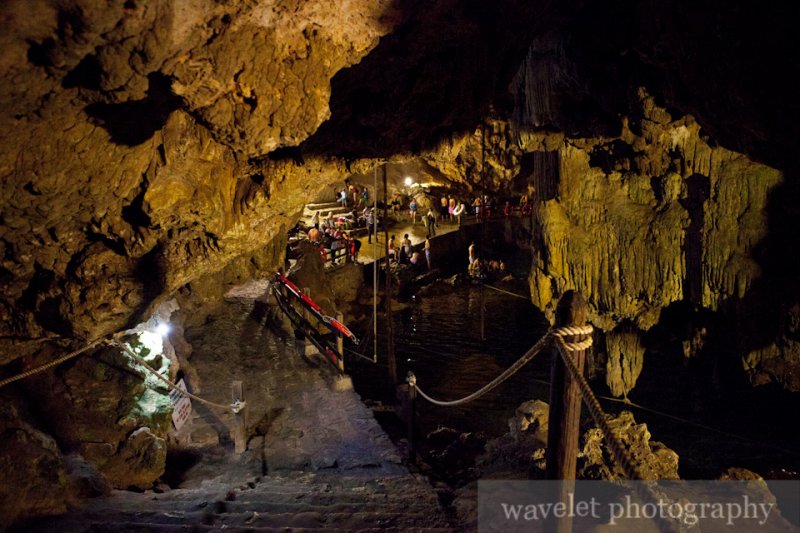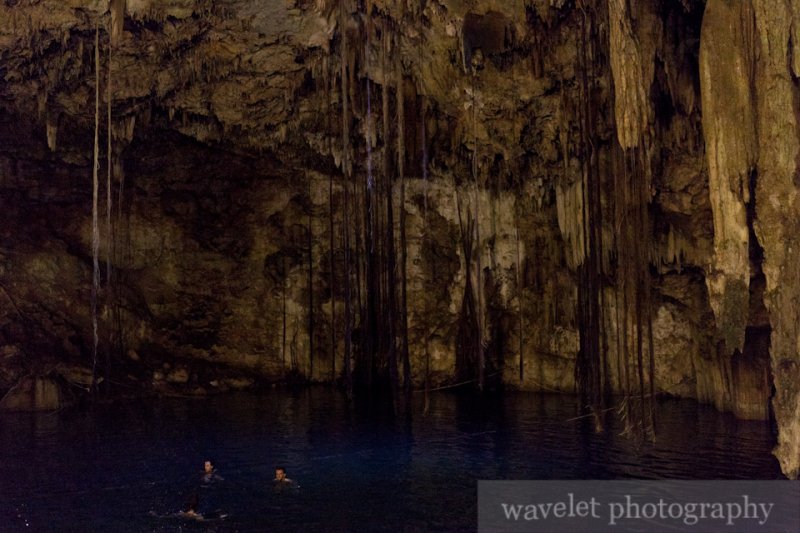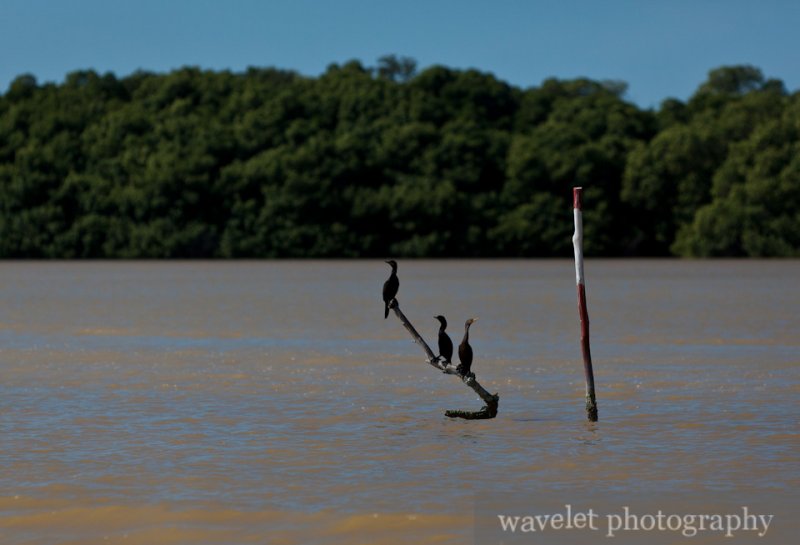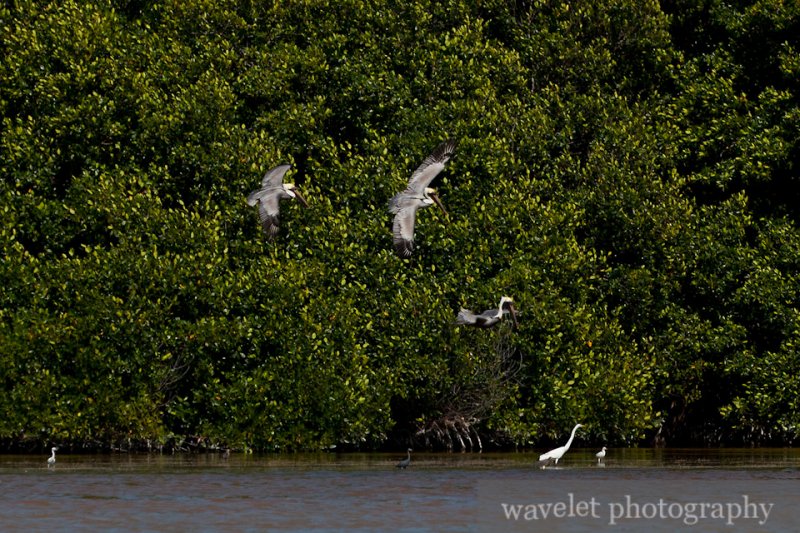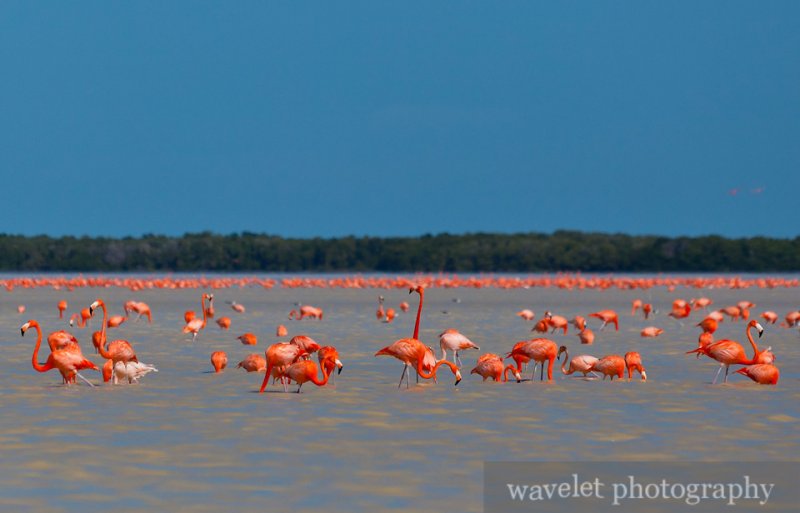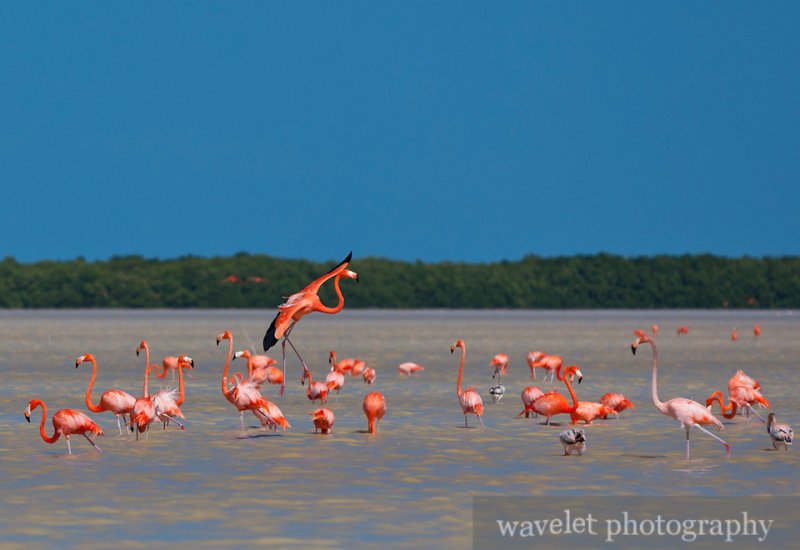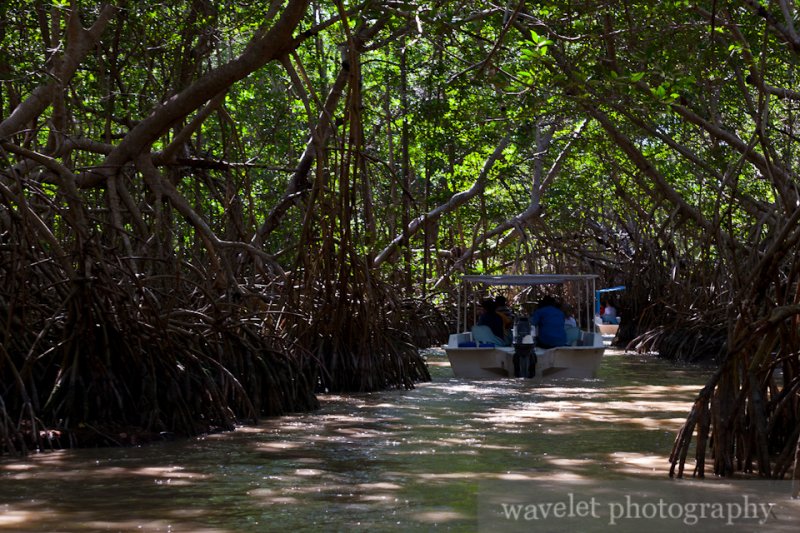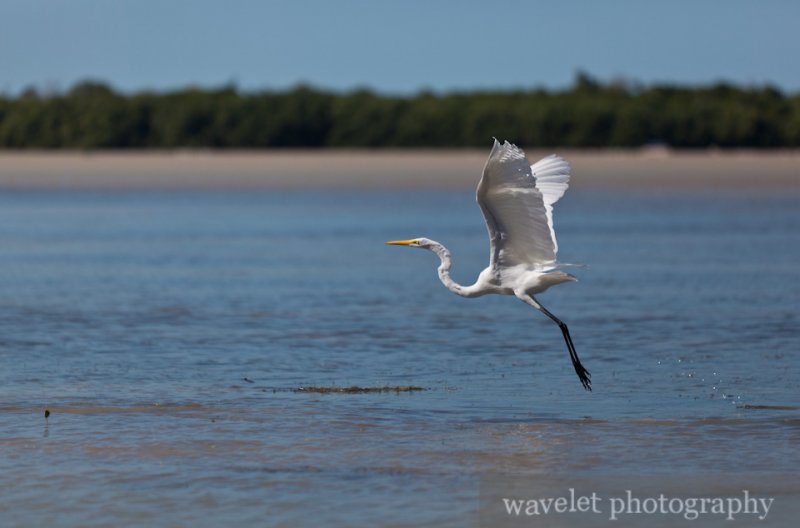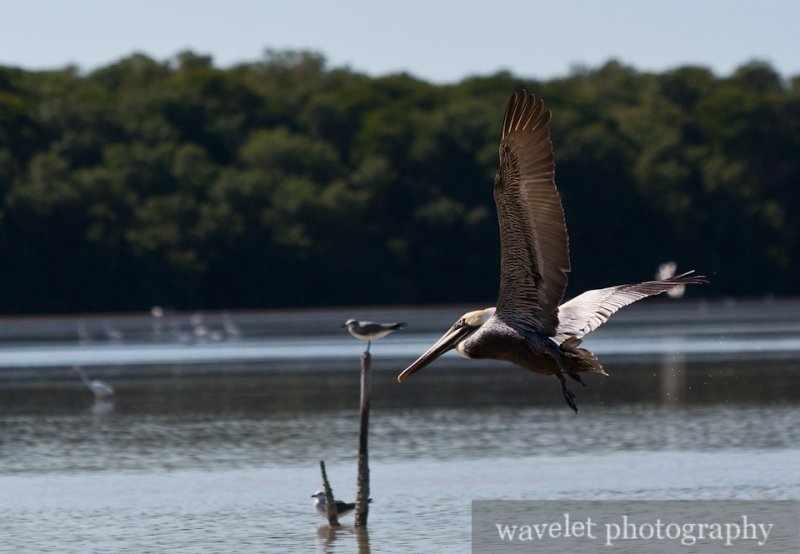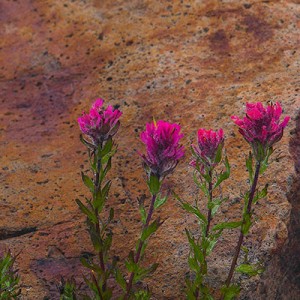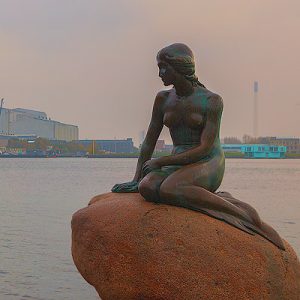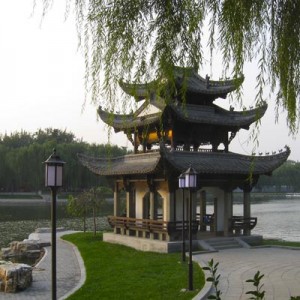Yucatán Peninsula has no river and only a few lakes, but it has a unique underground water system that provided major source of quality water for ancient Mayans. The underground water is accessed through the cenote. The most famous one is the sacred cenote in Chichén Itzá, but a lot of cenotes don’t necessarily have a open water pool. They are sheltered by rocks and caves. Cenotes can be found in much of the peninsula and some theme parks offer activities to visitors to walk and swim through the underground rivers and cenotes.
After we decided not to see Chichén Itzá in the late afternoon, we visited Cenote Dzitnup near Valladolid. Walked down a flight of steep stone steps, this cenote is at the bottom of a cavern. Tree roots grow through rocks and hang above the water. Cenote water is often very clear and flow super slowly. Many people like to swim in the water.
We saved the best for the last and went to see flamingos at Celestún Wildlife Refuge on our last day of the trip. It’s at 60 miles west of Mérida. After we were out of city, the road became 2-lane highway and we could only see jungles along the road. We passed small cities and villages every once a while. Most of the cities share the same colonial style as Valladolid and Mérida. Unlike the bigger cities, many people, especial woman, were in their traditional costume.
It took us almost 2 hours to get to Celestún. Right after passing the bridge over the lagoon, boats were waiting for visitors by the shore. We shared the boat with another Chinese couple. From the bag that the man carried, I knew that both of us came here for the same reason, to photograph birds. Once the boat started moving, we took the camera out of the bag, switched to the long-zoom lens. The sound of ‘click’ never stopped throughout the ride.
The lagoon is 30-mile long but only half-a-mile wide. The water is feed by 80 cenotes underground. It’s very shallow and ideal for flamingos and other waterfowl species. After about 20-minute ride, we got to the north end of the lagoon. The flock contains thousands of flamingos here. Looking from afar, they made a pink line along the horizon. To protect their habitat, boat is not allowed to get too close to the birds. Luckily, it was barely in the reach of my 200mm lens. Other stops after watching flamingos were less interesting, but we could see other birds, such as pelicans and egrets, in much closer distance.
